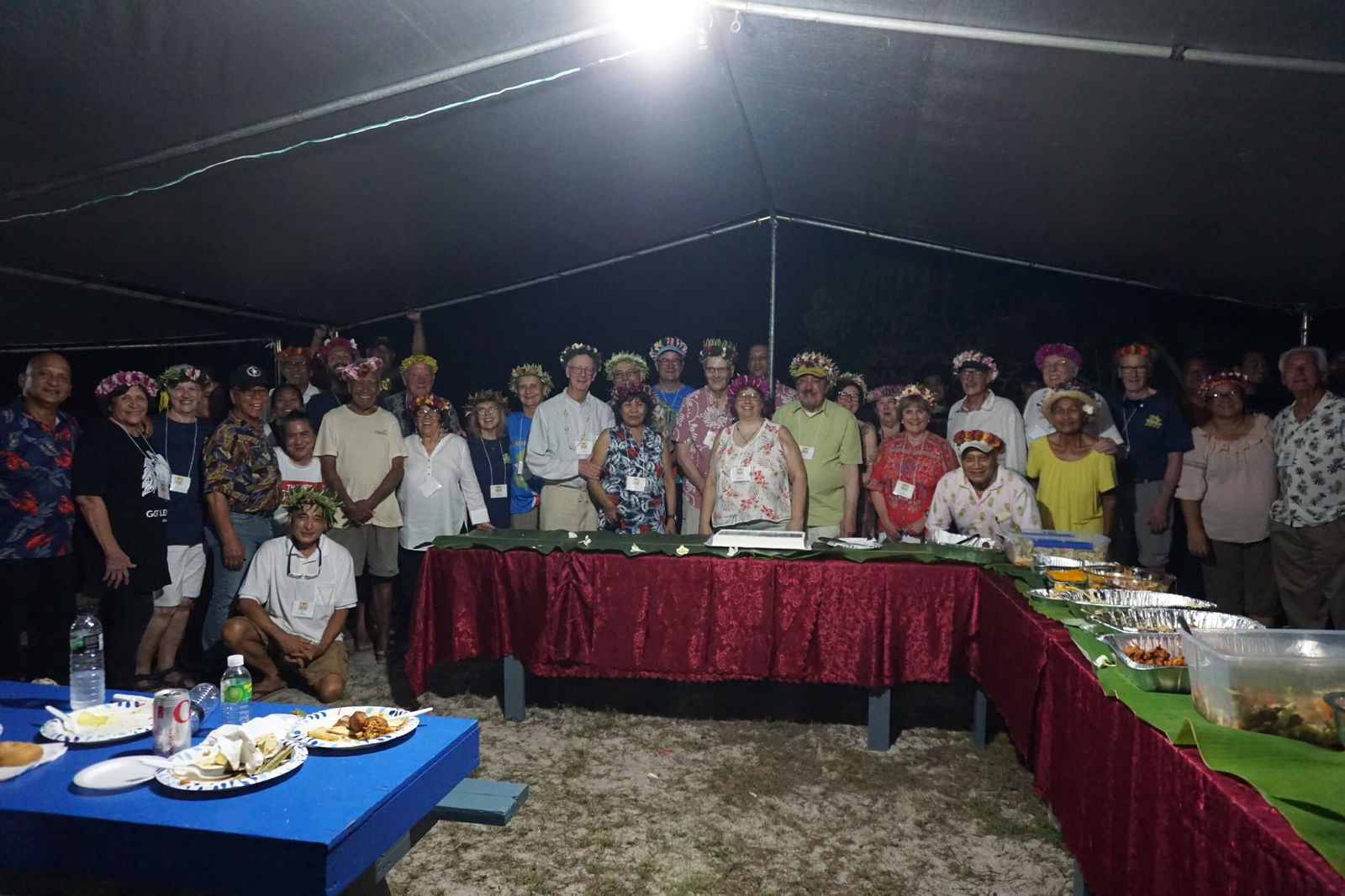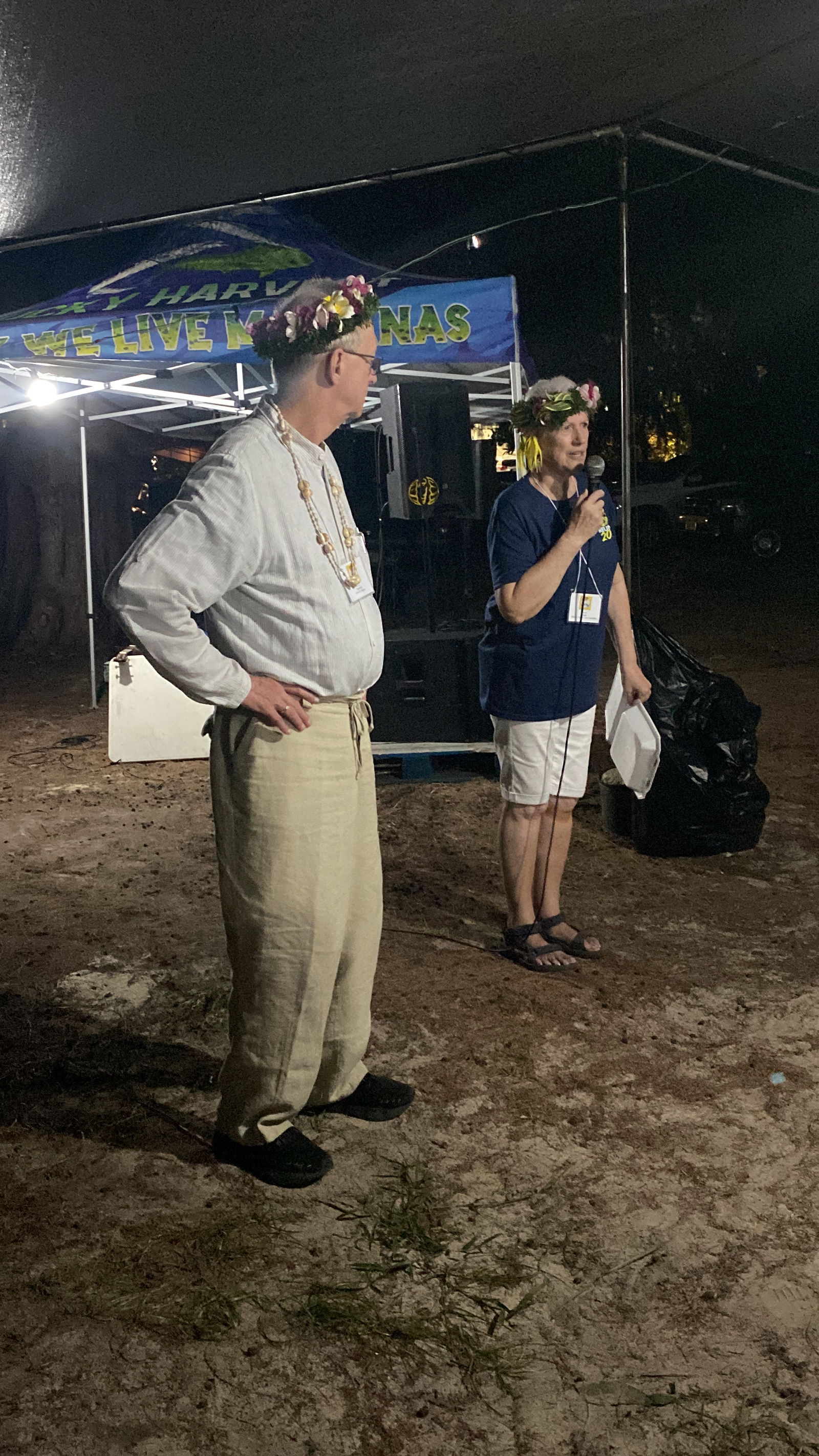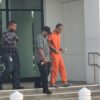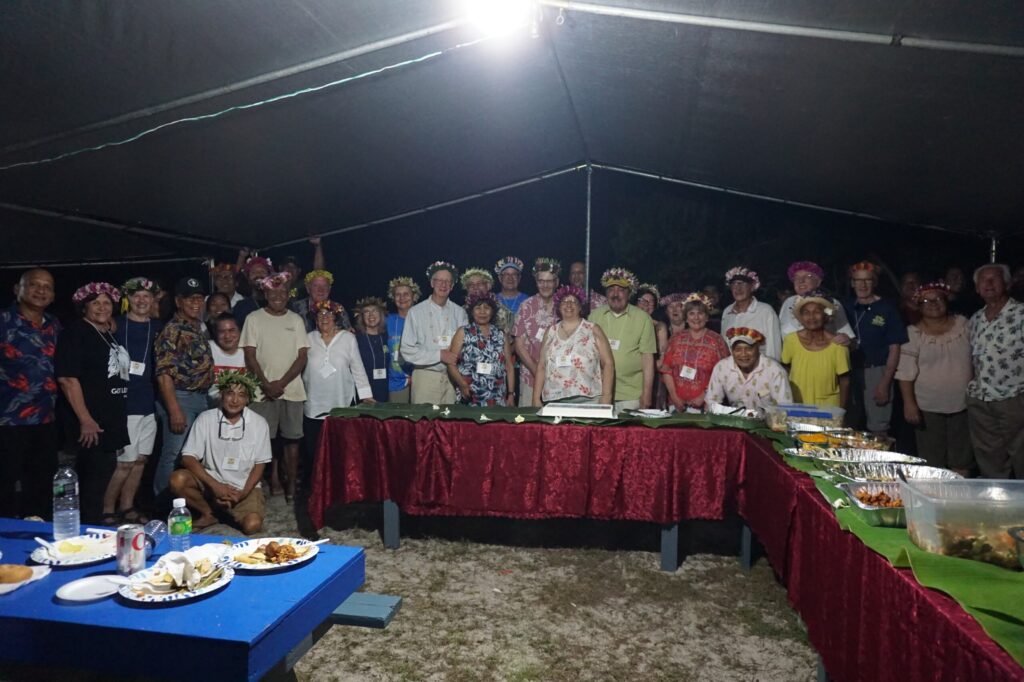TWENTY-TWO former Peace Corps volunteers in the Marianas during the 1960s and 1970s are on island for a reunion tour of the CNMI.
The tour was organized in the States by Terry Townsend and locally by Jean Olopai, who is a former Peace Corps volunteer herself.
While here, the former Peace Corps will tour Saipan, have barbecue on Managaha, participate in the Flame Tree Arts Festival, meet with government leaders, and fly to Tinian and Rota.
According to the group’s website, approximately 260 Peace Corps volunteers served in the Northern Marianas as teachers, community development specialists, agricultural specialists, commissioner’s assistants, architects, counselors, lawyers, librarians, communication coordinators, nursing instructors, economic development specialists, civil engineers, among other professions. Most served on Saipan with others volunteering on Agrigan, Pagan, Tinian, and Rota.
Townsend said he remains grateful to the people of the Marianas.
“We were as alien to them, to the people who lived 50 years ago, as anything could be, and yet people put up with us and we appreciate that,” he said.
He also spoke highly of the Peace Corps as an organization.
“The Peace Corps contributed to the development of the islands and we want to recognize the role of that agency as a force for good in the work of the United States,” he said.
On Thursday, April 24, Olopai, the other former volunteers and their families gathered in Chalan Kanoa for a welcome dinner.
One of the volunteers, Jim Peters, was on Saipan from 1970 to 1972 and was a teacher at Marianas High School. Peters said he worked for Marianas Variety’s predecessor, the Micronesian Star, with its founder, Mike Malone, another former Peace Corps volunteer.
The last time Peters visited Saipan was in 1977.
Peters spoke about what initial changes he noticed on his first day back on the island.
“This isn’t any different,” he said, referring to the sunset. “Looking to the west doesn’t look any different. The beach doesn’t look any different. But when I turn around and look the other way, I see good and bad. The infrastructure is great, the roads are great, everybody has cell phones now. I see telephone wire that goes everywhere. They didn’t when I was here before, only businesses had telephones.”
Peters said in the early 1970s, the Micronesian Star published one newspaper a week. He and Malone stapled and collated the papers by hand, and an employee, Danny Camacho, operated the press.
Their advertisers included Microl Corporation, Herman’s Modern Bakery, and Joeten, which only had one store, in Chalan Kanoa.
Gerry Milkie was among the first group of Peace Corps volunteers to arrive in the Marianas in 1966.
As Chamorro was widely spoken, Milkie said he picked up the local language while he was here. Regarding his current Chamorro language fluency level, he said “Dididi ha,” meaning, “only a little.”
“Malefa yo’ todu, lao sen magof yo’ na gaigae yo’ giya Sa’ipan ta’lu,” he added, meaning, “I forgot it all, but I’m very happy to be here on Saipan again.”
Milkie was an English teacher at Hopwood. He also taught math and science. At Mount Carmel School, Milkie was a trigonometry teacher.
Milkie said President John F. Kennedy influenced his decision to be a Peace Corps member.
“When I was still in high school, John Kennedy, who started the Peace Corps, announced [it] when he was campaigning for president at the University of Michigan. And I thought I like that idea,” Milkie said. “I said all through my college I was going to be a Peace Corps volunteer, because at that time there were a lot of not happy stories of Americans overseas. They called them ‘ugly Americans’ and I said, well, here’s a chance to see Americans who do things to help people rather than hurt people.”
Like Peters, Milkie spoke about the changes he saw on Saipan.
“The roads are paved, they weren’t then,” he said. “The only paved road was Beach Road and it was only two lanes wide at the time. Of course, the houses were kind of flimsy. There were a few concrete houses that the people with money had, but the majority were wood and of course Typhoon Jean changed all that,” he said, referring to the typhoon that hit Saipan in April 1968, causing extensive damage to buildings and structures.
“Chamorro was very widely spoken and Carolinian was very widely spoken,” Milkie said. “I was surprised on the plane coming here. I sat next to a Chamorro woman. I asked her if she was Chamorro and I asked in Chamorro and she said, ‘I don’t know very much Chamorro.’ The English level is quite a bit improved. That means maybe I succeeded more than I wanted to.”
Milkie said he wants to visit with any of his old high school students and neighbors, if they are still around.

Former Peace Corps volunteers, their families, friends, and local residents pose at a welcoming party in Chalan Kanoa on April 24, 2025.

Gerry Milkie and his wife Julie are on island as part of a reunion of former Peace Corps volunteers.

Terry Townsend, left, and Jean Olopai helped organize a reunion of former Peace Corps volunteers on Saipan.

Gerry Milkie holds a coconut crab while on Agrigan during his time with the Peace Corps in the late 1960s.











